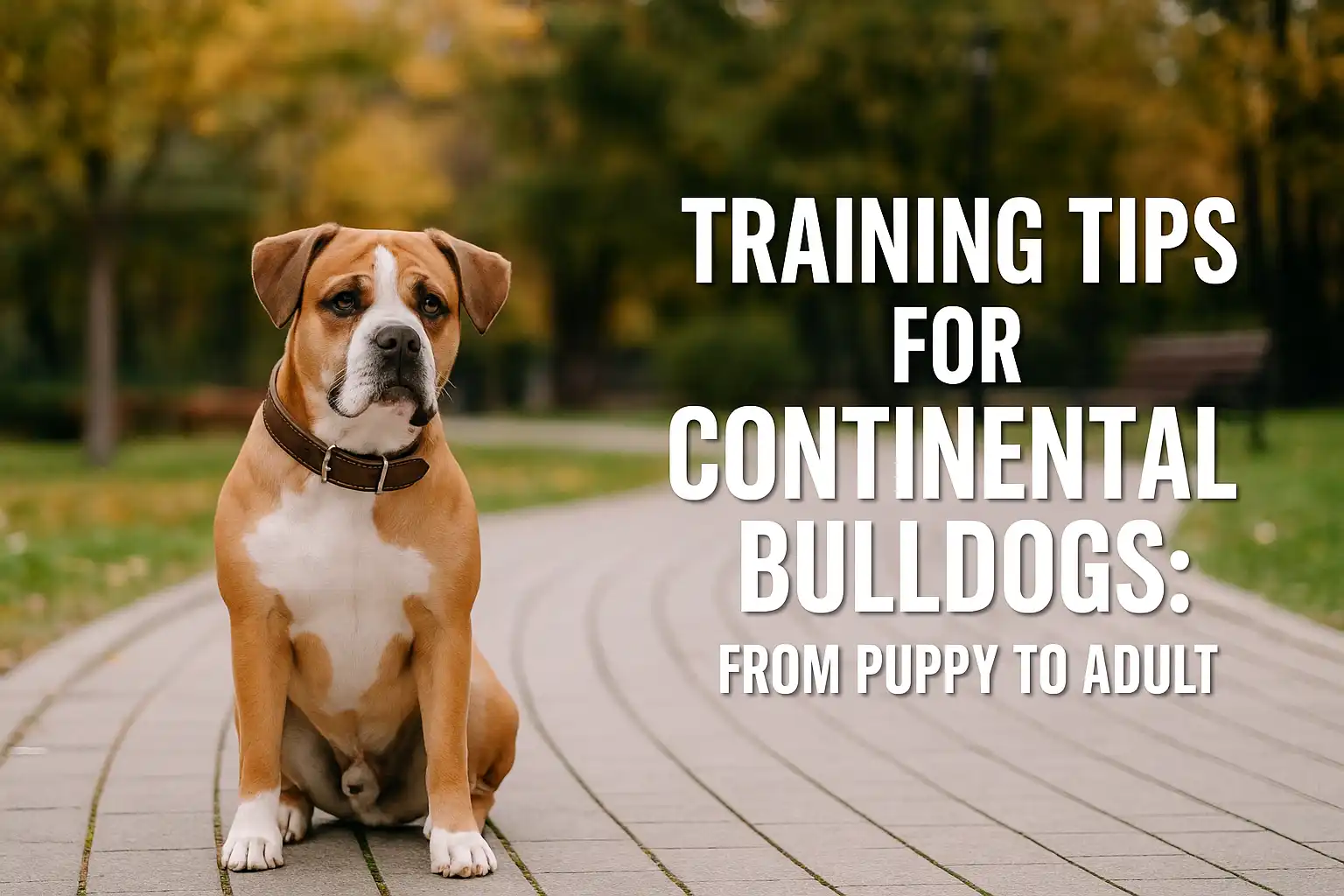Introduction
Training a Continental Bulldog can be both rewarding and challenging. Known for their loyalty and affectionate nature, these dogs also have a strong-willed streak, which makes consistent and positive training essential. Whether you’re working with a playful puppy or a mature adult, this guide will provide practical tips to help you build good habits, strengthen your bond, and ensure your bulldog becomes a well-mannered companion.
Start Early with Socialization
Begin socialization as early as possible. Expose your puppy to different environments, people, and other pets. Socialization helps prevent fear-based aggression and builds confidence. Learn more about early training from AKC Training Resources.
Use Positive Reinforcement
Continental Bulldogs respond best to positive reinforcement methods like praise, treats, and play. Avoid harsh punishment, as it can create fear and anxiety. Short, consistent training sessions are most effective for this breed.
Teach Basic Commands First
Start with essential commands such as “sit,” “stay,” “come,” and “leave it.” These commands form the foundation of good behavior and make future training easier. Keep sessions short and fun to maintain your bulldog’s attention.
Leash Training is a Must
Bullish energy combined with strength makes leash training crucial. Begin by introducing the leash indoors and rewarding calm behavior. Gradually move outdoors and teach your dog to walk without pulling.
Address Stubbornness with Patience
Continental Bulldogs can be stubborn, so patience is key. If your dog resists, avoid frustration—stay calm and repeat commands with consistency. Remember, persistence pays off.
Crate Training for Structure
Crate training helps with housebreaking and gives your dog a safe, comfortable space. Make the crate inviting with bedding and toys, and never use it as punishment.
Exercise and Mental Stimulation
A tired bulldog is a well-behaved bulldog. Provide daily walks and engage in interactive play. Puzzle toys and scent games keep their minds sharp and prevent boredom-related behavior issues. For enrichment ideas, visit PetMD Training Tips.
Handle Behavioral Issues Early
Jumping, nipping, or excessive barking should be addressed promptly with redirection and reward-based training. Ignoring bad habits only makes them harder to break later.
Professional Help if Needed
If you struggle with training or encounter aggression, consult a certified dog trainer or behaviorist. Professional guidance can make a big difference in overcoming challenges.
Conclusion
Training your Continental Bulldog takes time, patience, and consistency, but the results are worth it. A well-trained dog is happier, healthier, and a joy to have as part of the family. Start early, use positive methods, and enjoy the journey of building a lifelong bond with your loyal companion.
Read next: Top 10 Care Tips for Continental Bulldogs to Keep Them Healthy and Happy

